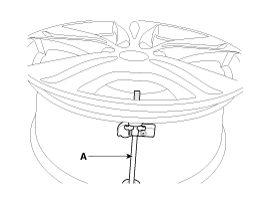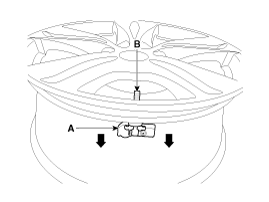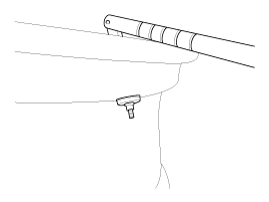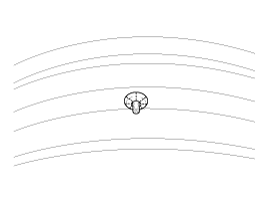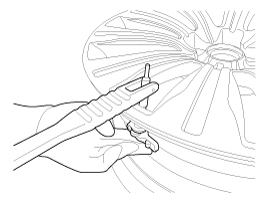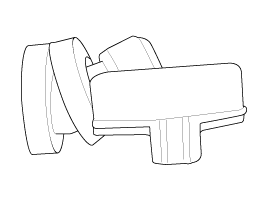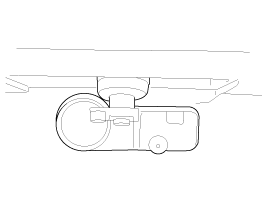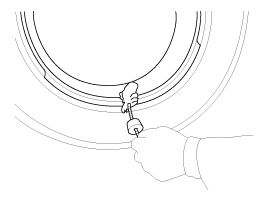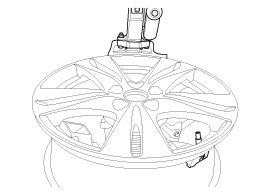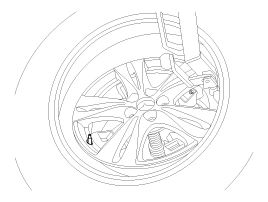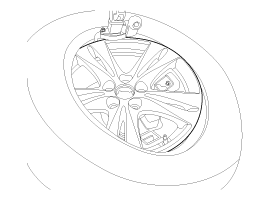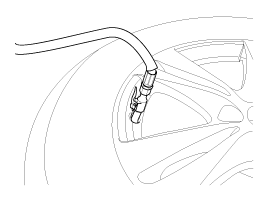 Kia Sedona: TPMS Sensor Repair procedures
Kia Sedona: TPMS Sensor Repair procedures
Third generation YP (2014-2025) / Kia Sedona YP Service Manual / Suspension System / Tire Pressure Monitoring System / TPMS Sensor Repair procedures
| Removal |
| 1. |
Remove the tire.
(Refer to Tires/Wheels - "Tire") |
| 2. |
Remove the screw with torx driver (A).
|
| 3. |
Remove the sensor body (A) from the valve (B) in the direction of the arrow.
|
| 4. |
Use the valve mounting tool to pull out the valve until it is entirely out of the lower hole.
|
| 5. |
Apply lubricant to the surface of the valve, and then mount it through the valve hole of the wheel.
|
| 6. |
Apply soapy water or lubricant to the upper/lower bead section of the tire.
|
| 7. |
In order to mount the lower beads, place the TPMS sensor at 5
o''clock, starting from the head of the tire replacement equipment.
|
| 8. |
Rotate the rim clockwise and press tire towards 3 o''clock to mount the lower beads.
|
| 9. |
In order to mount the upper beads, press the tire towards 3 o''clock and turn the rim clockwise.
|
| 10. |
Inject air into the tire until the beads are in the correct position.
|
| 11. |
Adjust the tire pressure according to the recommended tire pressure for the vehicle. |
| 12. |
If the TPMS sensor malfunctions, the TPMS sensor learning
must be performed. Replace any faulty sensors and perform TPMS sensor
learning. |
| Diagnosis procedure using GDS |
To give guidance for diagnosing using diagnosis device, refer to the following:
| 1. |
Connect self-diagnosis connector (16 pins) located in the
lower driver side crash pad to self-diagnosis device, and then turn on
the self-diagnosis device after key is ON. |
| 2. |
Select the "vehicle model" and "TPMS" on GDS vehicle selection screen, then select OK. |
[System Identification (Wireless)]
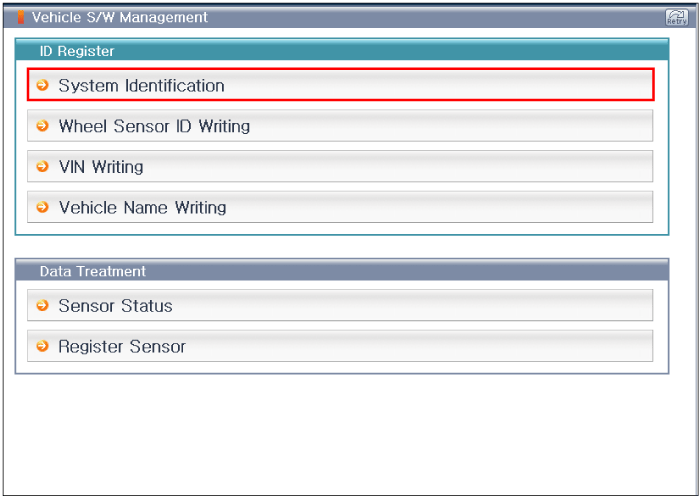
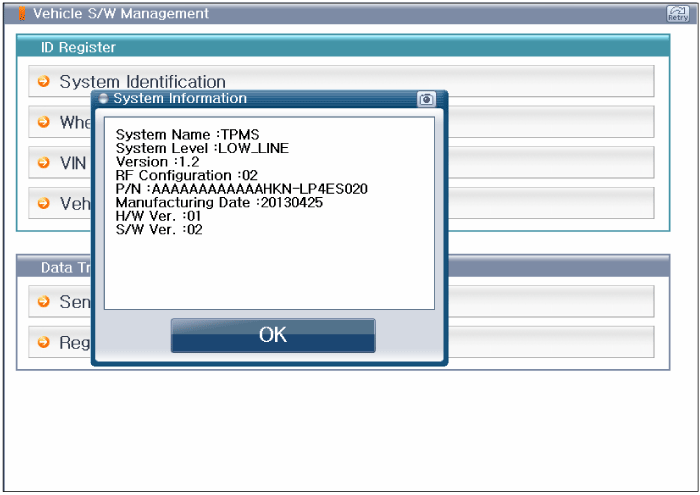
[Sensor ID Writing (Wireless)]
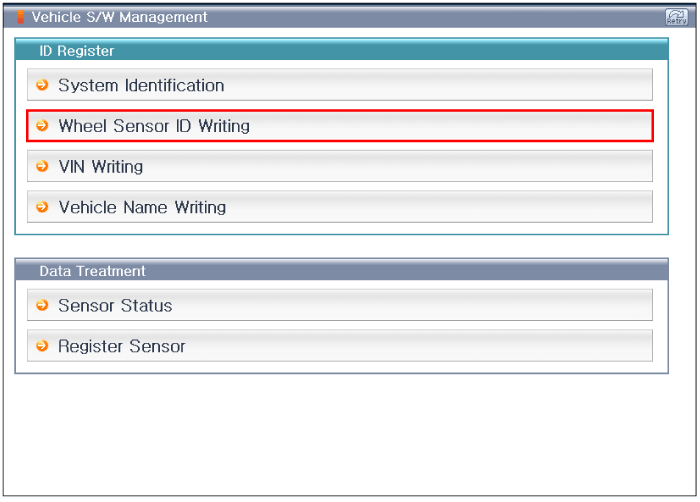
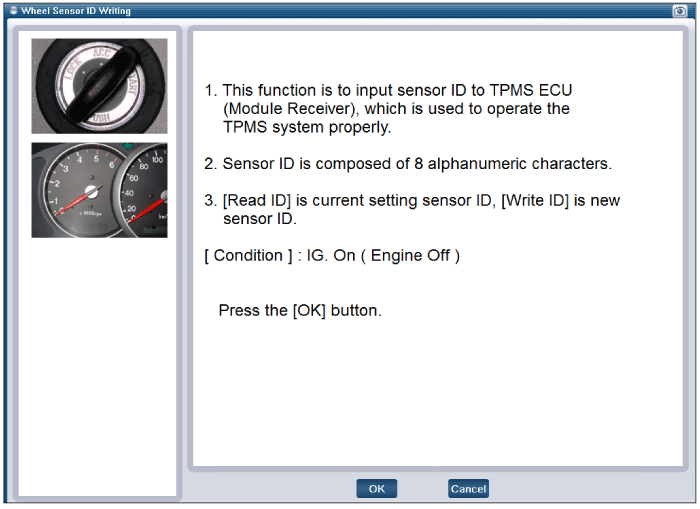
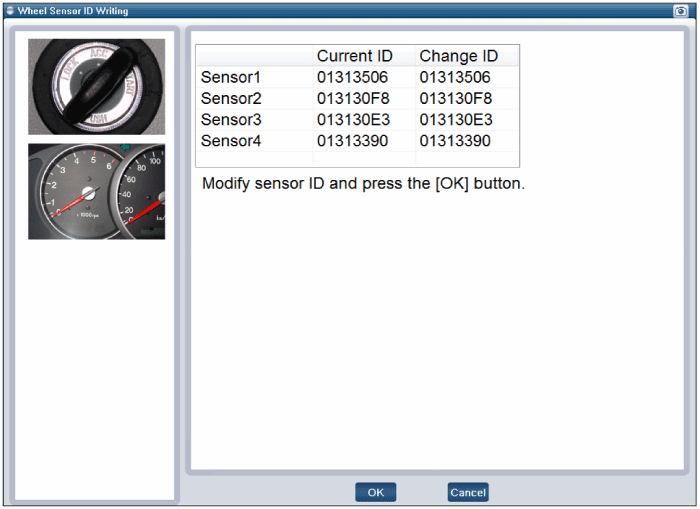
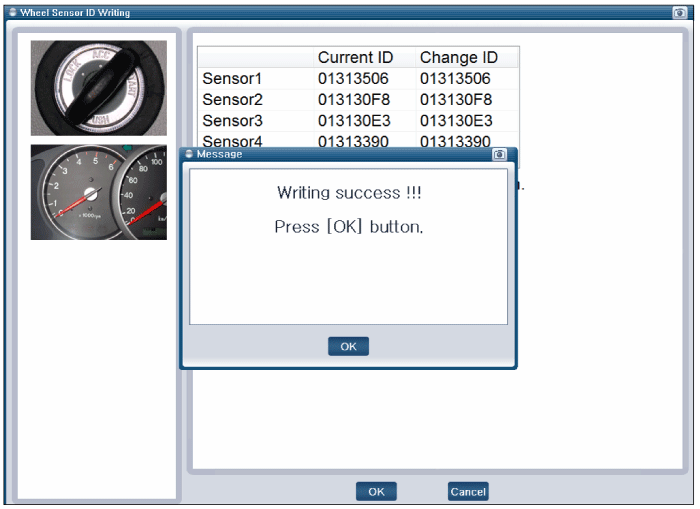
[VIN input initialization]
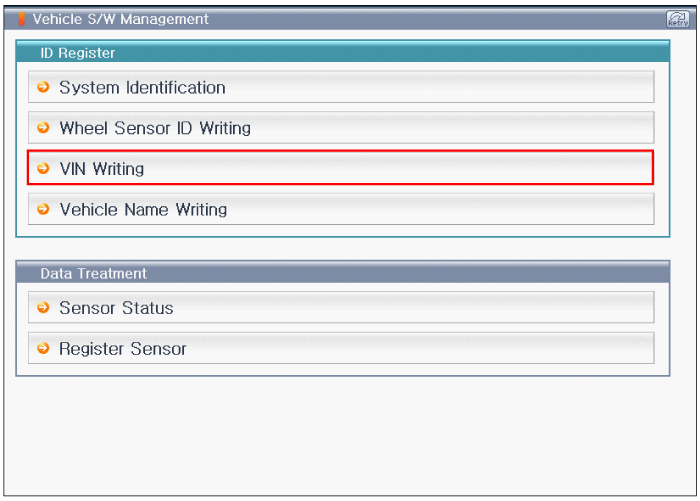
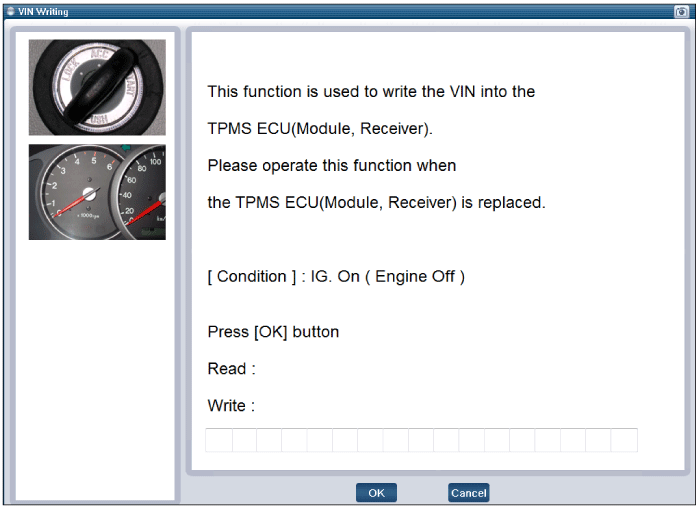
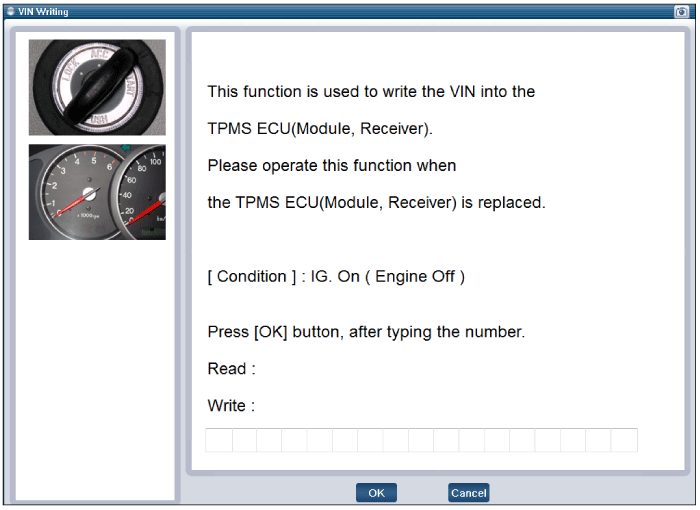
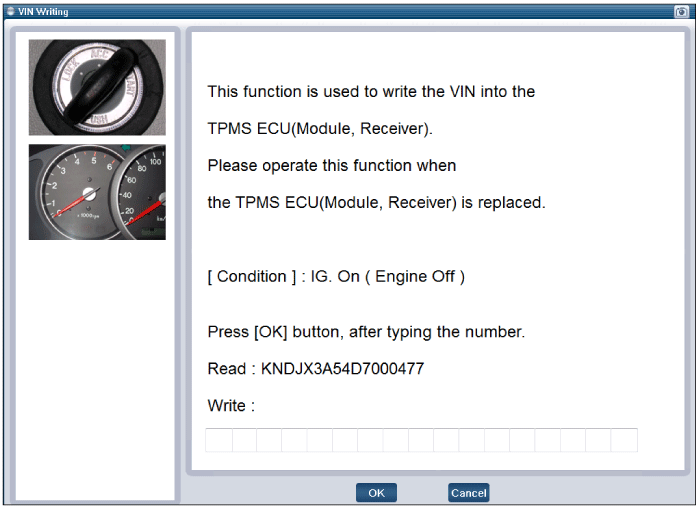
[Vehicle name input initialization]
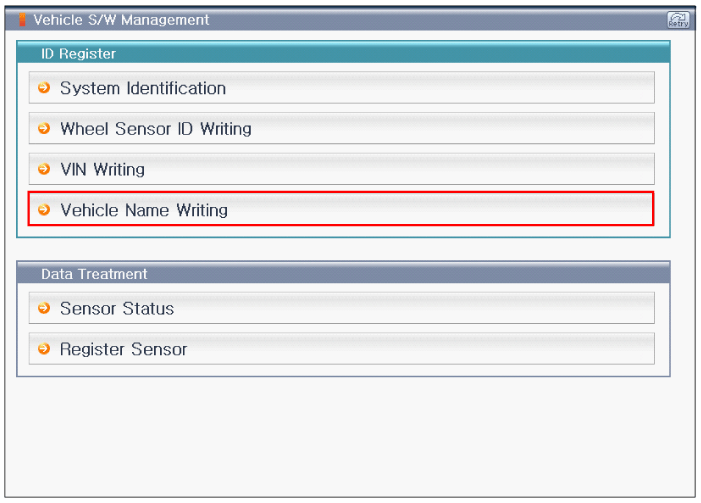
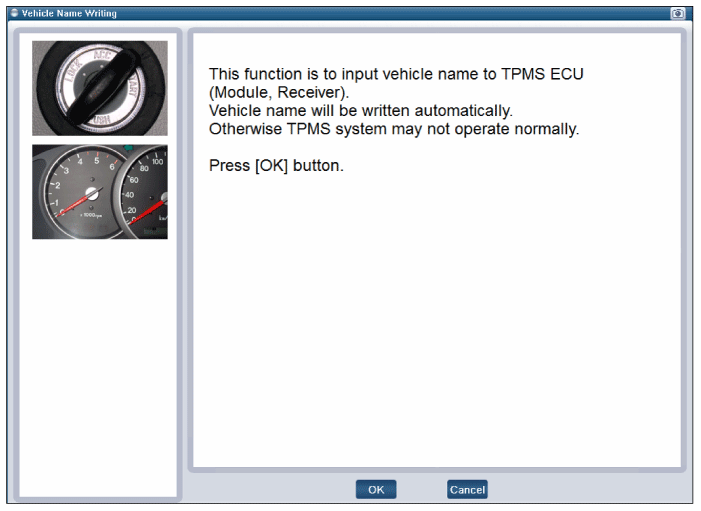
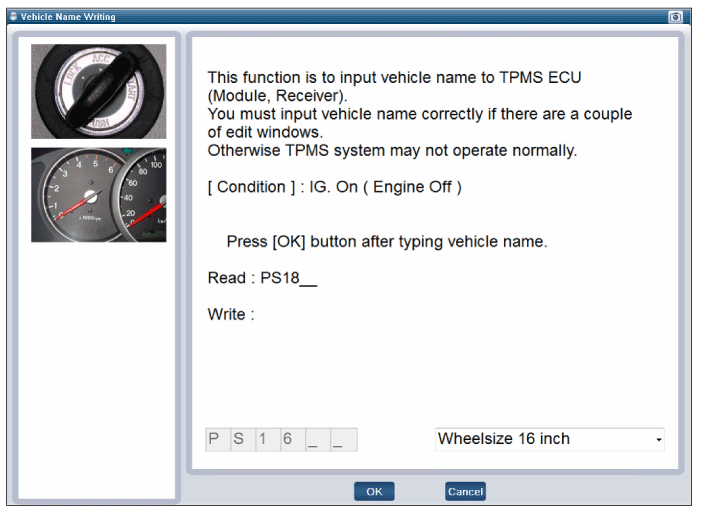
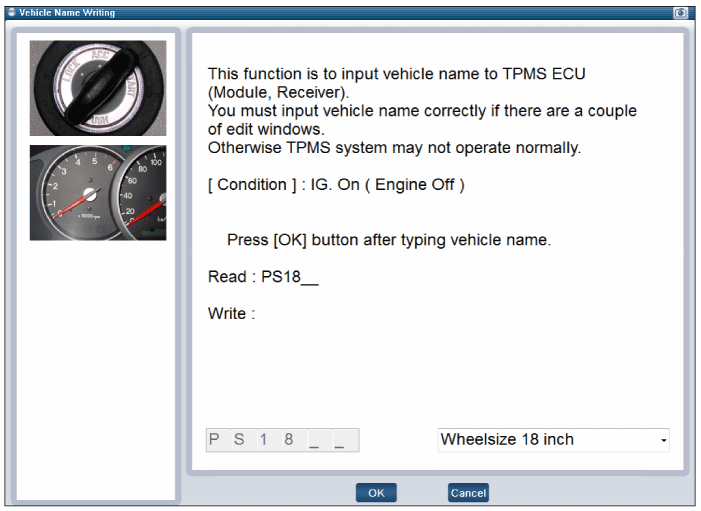
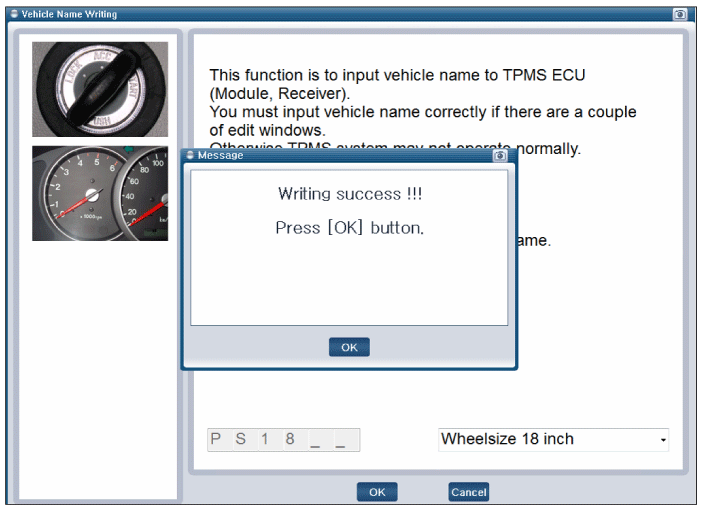
[Sensor Status initialization]
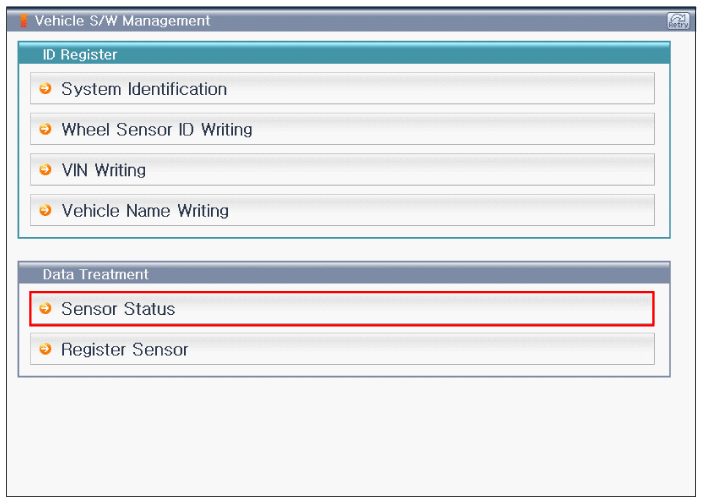
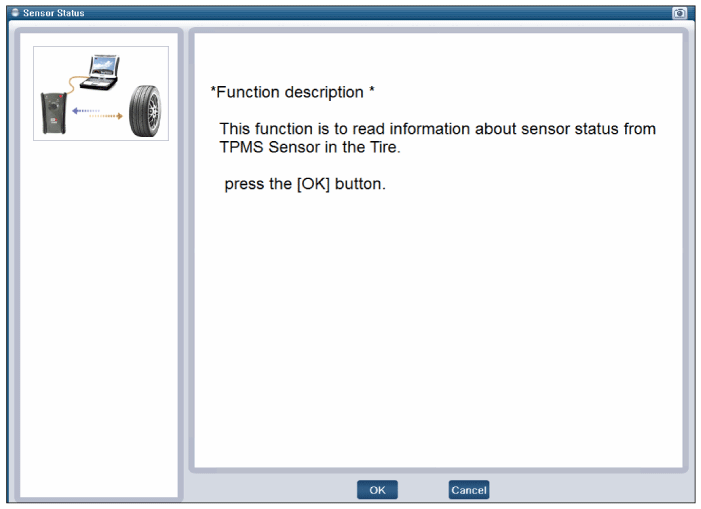
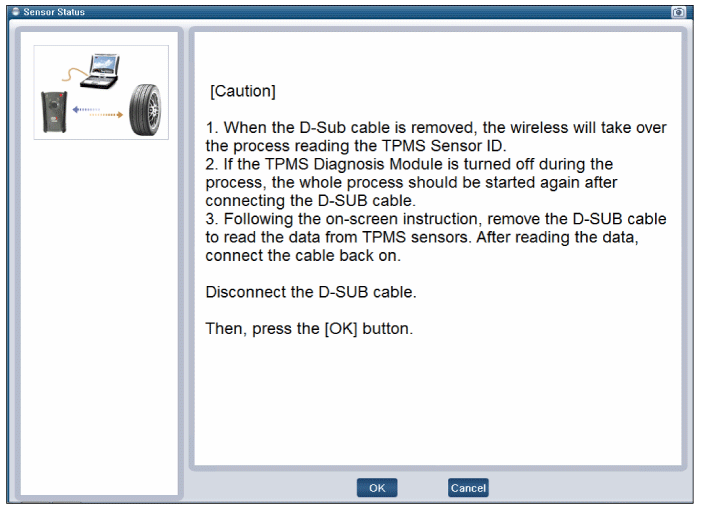
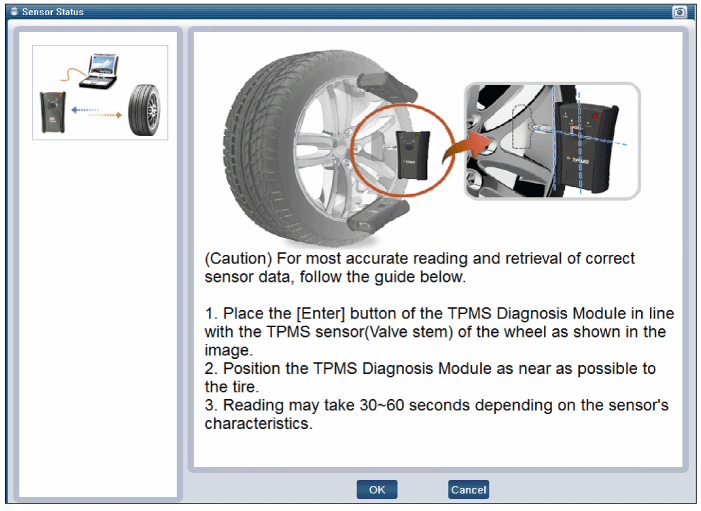
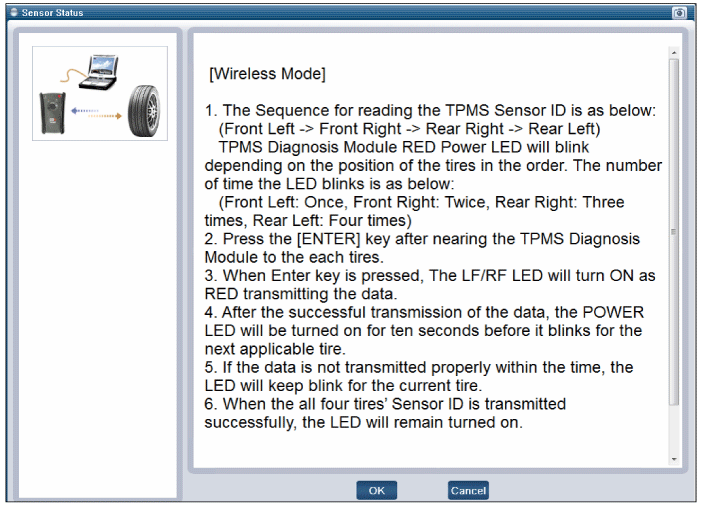
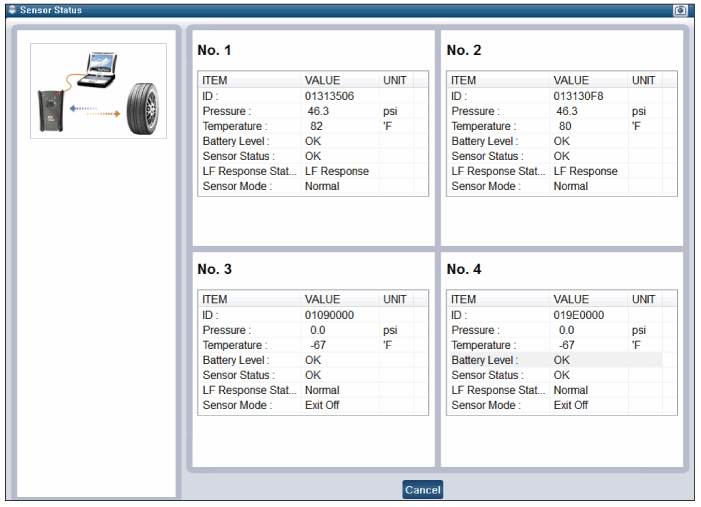
[Register Sensor initialization]
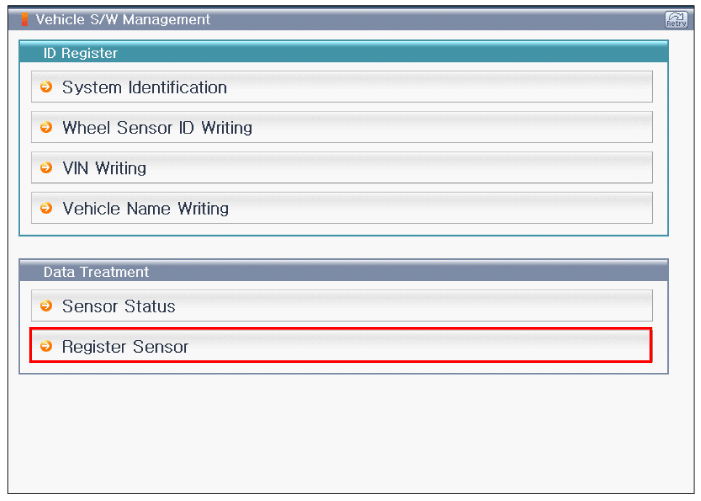
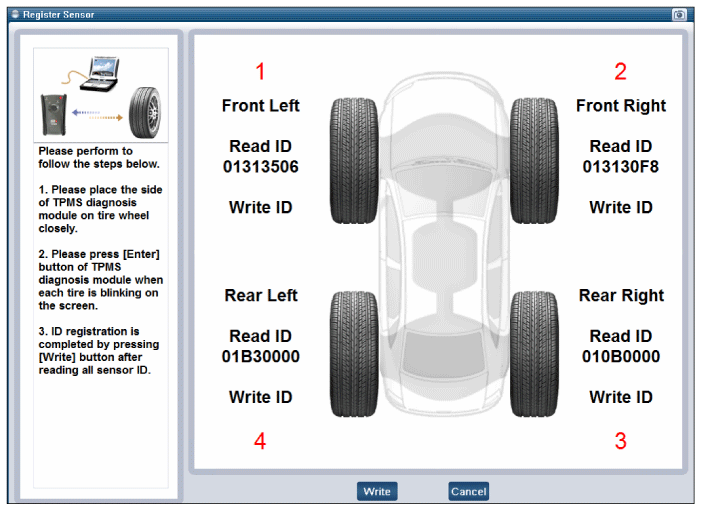
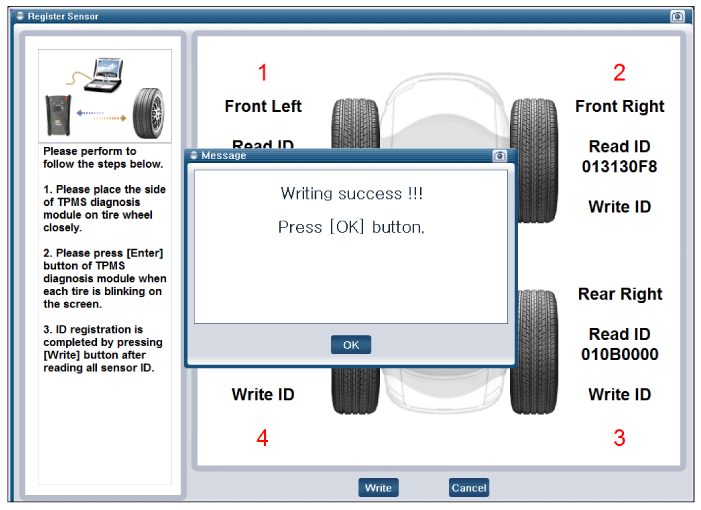
|
 TPMS Sensor Description and Operation
TPMS Sensor Description and Operation
Description
1.
Function
•
By detecting the pressure, temperature, acceleration, and battery condition, transmit information to ECU by a wireless RF.
•
2.
Structure and f ...
 TPMS Receiver Description and Operation
TPMS Receiver Description and Operation
Description
1.
Mode
(1)
Virgin State
•
The receiver as a sole part is shipped in this state. Replacement parts should therefore arrive in this state.
•
In this state, there ...
Other Information:
Front Seat Belt Pretensioner Components and Components Location
Component Location
1. Front seat belt pretensioner
...
Description and Operation
Description
This function memorizes the optimized seat position set by
the driver into the power seat unit by operating the IMS switch so that
the personal setting position of the seat can be r ...
Categories
- Home
- First Generation
- Second Generation
- Third generation
- Kia Sedona YP 2014-2025 Owners Manual
- Kia Sedona YP 2014-2025 Service Manual
Copyright © www.kisedona.com 2016-2025


